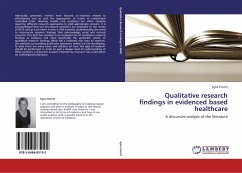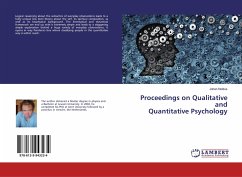
QUALITATIVE HEART-SPECIFIC FATTY ACID BINDING PROTEIN (H-FABP) TEST
CLINICAL EVALUATION IN MYOCARDIAL INFARCTION
Versandkostenfrei!
Versandfertig in 6-10 Tagen
39,99 €
inkl. MwSt.

PAYBACK Punkte
20 °P sammeln!
Early and correct diagnosis of patients admitted to the hospital with symptoms suggestive of acute myocardial infarction (AMI) is paramount to ensure appropriate therapy is given to minimize myocardial injury and improve clinical outcome. The urgency in recognizing and treating patients with an AMI as early as possible has been repeatedly stressed and reiterated in various guidelines that lead to the well-known phrase of Time loss is myocardium loss'. As a consequence, the patient's prognosis will deteriorate.In situation like these, cardiac biomarkers may be invaluable in establishing a diagn...
Early and correct diagnosis of patients admitted to the hospital with symptoms suggestive of acute myocardial infarction (AMI) is paramount to ensure appropriate therapy is given to minimize myocardial injury and improve clinical outcome. The urgency in recognizing and treating patients with an AMI as early as possible has been repeatedly stressed and reiterated in various guidelines that lead to the well-known phrase of Time loss is myocardium loss'. As a consequence, the patient's prognosis will deteriorate.In situation like these, cardiac biomarkers may be invaluable in establishing a diagnosis of AMI in the ED setting. A number of established cardiac biomarkers have been available in the market and several new promising assays with better sensitivity have been discovered. A recent potential cardiac biomarker that shows release kinetics similar to myoglobin is heart-type fatty acid-binding protein (H-FABP). We believe that this diagnostic kit that detects H-FABP at the bedside, still needs further evaluation especially to assess its performance and practicality to detect AMI in patients presenting with chest pain in the ED setting.












